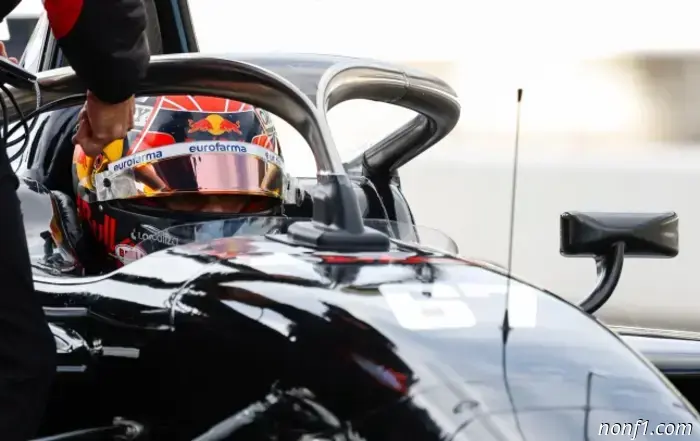
Ferrari's progress is important to the work on Project 678.
Ferrari’s results at two consecutive rounds, in Austin and Mexico, where Charles Leclerc climbed the podium, gave the Italian team valuable information about the SF-25’s suspension. Its engineers concluded that no major changes to those parts of the car are required anymore and that they can be limited to only minor refinements.
According to Gazzetta dello Sport, the key point is that on two tracks with different configurations, where the races took place in rather different conditions (in Mexico it was a lack of grip and thin air), the car was capable of both high qualifying speed and a stable pace in the Sunday Grand Prix.
At both rounds Scuderia engineers found the right approach to setting up the SF-25, and the large volume of data gathered over the two weekends will be useful not only in the remaining races of the season but could also prove very helpful in the development of the 2026 car.
Importantly, on two different tracks where the car’s aerodynamic package was trimmed for different levels of downforce, there was no cause for concern about excessive wear of the skid plank under the SF-25’s floor.
In 2026 this problem should not exist at all, since next-generation cars will not use ground effect — they will not have Venturi tunnels — however the outcomes of the US and Mexico Grands Prix will help Ferrari’s engineers dispel doubts about a number of fundamental decisions that must be made in the process of creating the new chassis.
The point is that the project codenamed “678” will require fewer corrections than might previously have been assumed. Such corrections would have been necessary if the effectiveness of the SF-25’s front and rear suspension had continued to raise questions.
Of course certain further refinements will still be made, but, as the respected Italian paper writes, since Maranello has been convinced of the running gear’s effectiveness, engineers will be able to focus their main attention on its individual elements — selecting the optimal stiffness of torsion springs and dampers, including those responsible for maintaining ride height.
That is to say, the conceptual choice can be considered already made, and what remains is suspension fine-tuning — something not to be underestimated at the current stage of the new chassis project, when the basic configuration of the new car has already been defined and the phase of producing prototype samples of many key components is beginning.

Other articles
 Enzo Fittipaldi moves to the Indy NXT series.
Enzo Fittipaldi has made the final decision to continue his career in American racing and will compete in the Indy NXT series next year...
Ralf Schumacher defended Lewis Hamilton.
Ralf Schumacher defended Lewis Hamilton, who made a mistake in Mexico while trying to defend his position against Max Verstappen's attacks, but it all ended with a 10-second penalty...
Enzo Fittipaldi moves to the Indy NXT series.
Enzo Fittipaldi has made the final decision to continue his career in American racing and will compete in the Indy NXT series next year...
Ralf Schumacher defended Lewis Hamilton.
Ralf Schumacher defended Lewis Hamilton, who made a mistake in Mexico while trying to defend his position against Max Verstappen's attacks, but it all ended with a 10-second penalty...
 Steiner: McLaren — Verstappen's ally in the fight for the title
Günther Steiner is known for his provocative statements. This time the former Haas team principal called McLaren an ally of Max Verstappen in the fight for the title, and Oscar Piastri the number two of the Woking-based team.
Marko: Sainz presented Ferrari with a belated gift.
Helmut Marko called Carlos Sainz's crash towards the end of the Mexican Grand Prix "a belated gift" that the Spanish Williams driver gave to Ferrari...
Steiner: McLaren — Verstappen's ally in the fight for the title
Günther Steiner is known for his provocative statements. This time the former Haas team principal called McLaren an ally of Max Verstappen in the fight for the title, and Oscar Piastri the number two of the Woking-based team.
Marko: Sainz presented Ferrari with a belated gift.
Helmut Marko called Carlos Sainz's crash towards the end of the Mexican Grand Prix "a belated gift" that the Spanish Williams driver gave to Ferrari...
 Hamilton spoke about working on new projects.
Lewis Hamilton was one of the producers of the F1 feature film. After the film's success at the worldwide box office, the Ferrari driver said that his production company, Dawn Apollo Films, is working on new projects, including television shows and animated films.
Hamilton spoke about working on new projects.
Lewis Hamilton was one of the producers of the F1 feature film. After the film's success at the worldwide box office, the Ferrari driver said that his production company, Dawn Apollo Films, is working on new projects, including television shows and animated films.
Ferrari's progress is important to the work on Project 678.
Consistent results from Ferrari in two consecutive races allowed the team to gather valuable information about the SF-25's suspension performance, which will also be useful in the development of the new car...
